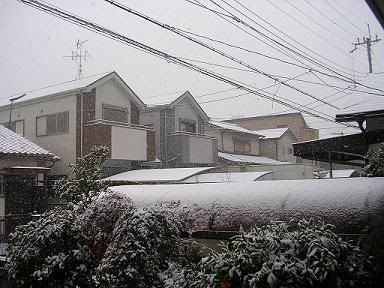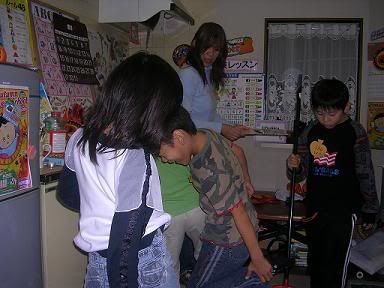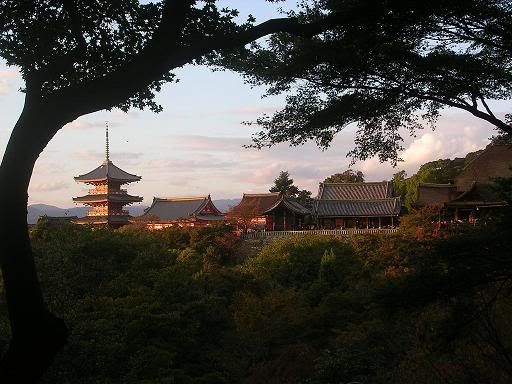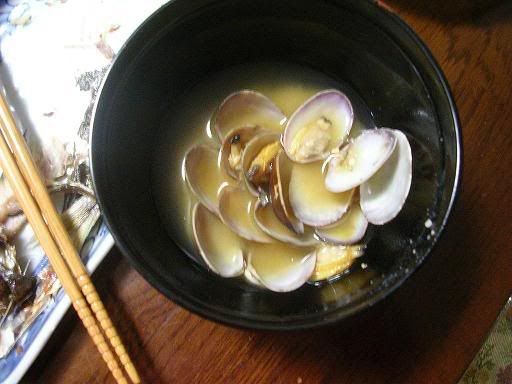For starters, even normal kitkats come wrapped differently in Japan. Two pieces of KitKats are wrapped in traditional plastic wrapper, and two of those wrapped KitKats are placed side by side in a cardboard box, which is then sold in prices ranging from 105 yen to 200 yen (I usually see them for 150 yen). The quality of chocolate (in my humblest of opinions) is much better than their American counterparts, even if they look significantly overwrapped to my American eye. Now let us move on to my rather humble collection of KitKat boxes. I will be adding photos as I find more varieties.
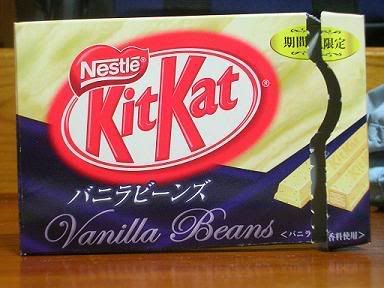
Called "Vanella Beans," this is the Japanese answer to the American "White Chocolate KitKat." There is no difference in taste except possibly for the quality of chocolate used.
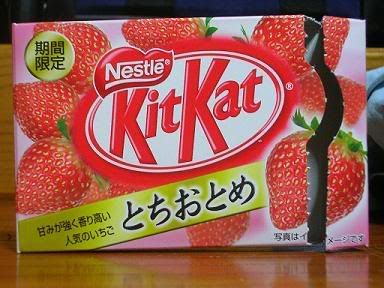
The "Strawberry" variety manages to blend my all-time favorite candy with my all-time favorite fruit so naturally, I am a bit biased toward this type of KitKat...
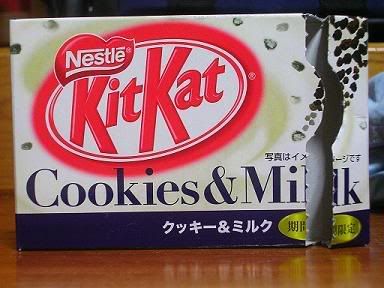
"Cookies and Milk" is another of my favorites because it is an Oreo flavored KitKat bar. Thus, KitKats have now joined the ranks of McFlurries, Sonic Blasts, and Hershey Bars in the Oreo flavor category.

The "Apple" variety is somehow more special compared to the previously mentioned forms of KitKats because it costs more, gives you only two pieces that are only slightly wider and no taller than the original (thus stealthily giving you less chocolate), and says "for a moment of precious indulgence."
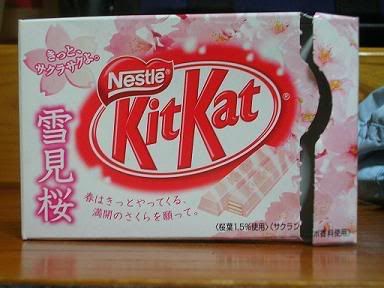
The extra-special "Sakura" KitKat. This one apparently only comes out during exam times and is the preferred choice to give to your student who will be taking entrance exams this year (as explained to me by my host mother who found my obvious preference of KitKat to all other forms of chocolate amusing). It tastes pink.
Other forms of KitKats that I am aware exist but have not bought are Orange KitKats and Green Tea KitKats. I have not yet found Orane KitKats anywhere but I have heard about them. The Green Tea variety exists at my local conbini and puts KitKats with the ranks of Green Tea Mochi, Pocky, and ice cream, but I have not bought it yet because I unfortunately am not a fan of green tea. However, for the sake of research...
As I find more varieties, I will be adding them to this post. Consequently, if any fellow Visual Anthro bloggers happen to find an unmentioned type of KitKat and feels so generous to buy me one, I will be most grateful.
EDIT: More KitKat photos...

Green Tea Kitkats. I personally do not like green tea, so fortunately my friend Krissy (who loves green tea) was quite willing to eat them for me so that I could have the box.
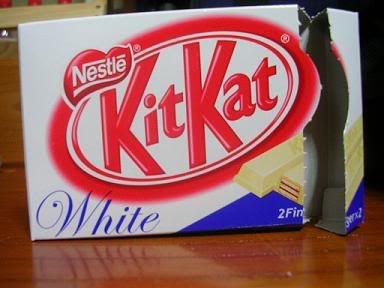
White Kitkats are made out of white chocolate. Tastes exactly the same as the vanella bean kitkat.
